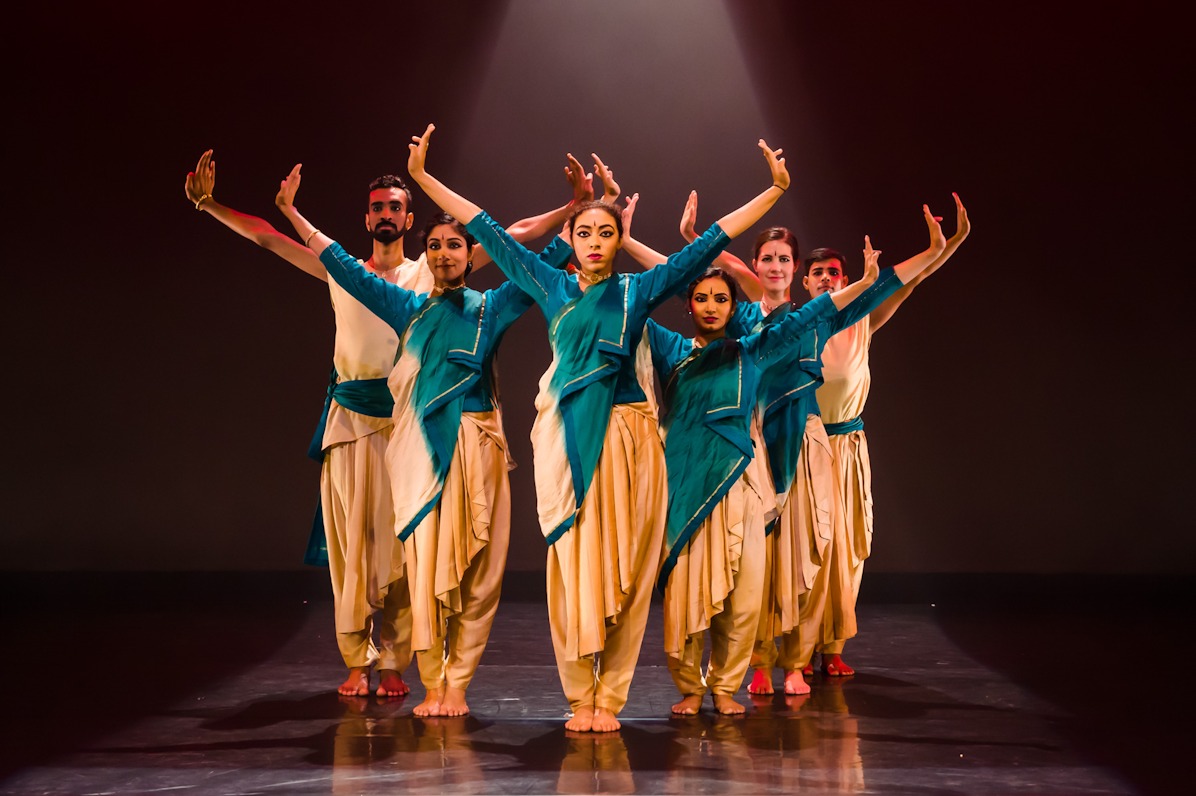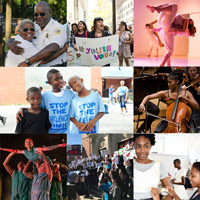International Connections Fund grant recipients created collaborative works of art with global partners that expand what’s possible.
The dancers assembled for their weekly ballet class at the Dorchester Art + Housing Collaborative on Chicago’s South Side. In walked a Brazilian dance instructor who had traveled thousands of miles to teach them her specialty—ritual movement.
Trouble was, the altered lesson plan had not been relayed to the ballerinas. The intent: A few of them would learn and perform Inaê Moreira’s choreographed works in an upcoming show. But the miscommunication led to an uncomfortable few moments.
Moreira persisted anyway. Tension melted and morphed into enthusiasm. By the end of the session, half the class asked to participate in her show, which centers around the theme of rebirth.
“A spiritual sister circle,” was how one ballet student, Donna Anderson, recalled the session. “A journey that I’ll always remember.”
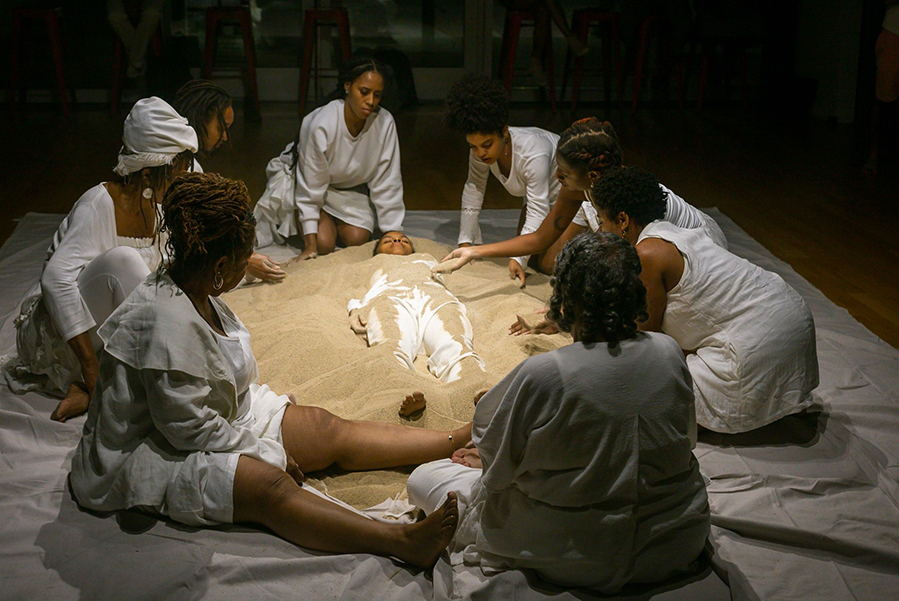
Dancers perform as part of the Comfort Station/Projeto Ativa collaboration
The unlikely adaptation was born of the International Connections Fund (ICF), a program of innovation and collaboration that links artists from Chicago with counterparts from other continents and cultures to create exhibitions, theater, film, and dance.
Established in 2008, ICF enables Chicago arts and culture organizations to coordinate exchanges and partnerships that help them engage more deeply with their own communities while building on shared histories and translating ideas across boundaries.
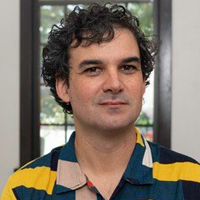
Jordan Martins
Jordan Martins, executive director of Comfort Station, a small, volunteer-based arts organization that received a $50,000 ICF grant in 2018, coordinated the encounter between Moreira and the Dorchester dancers.
It was part of an exchange called “Close to There,” an exploration of the African diaspora in Chicago and Brazil that brought 13 Brazilian artists to Chicago. Comfort Station’s Brazilian partner is Projeto Ativa, which attempts to use available public spaces for art.
Martins said the spontaneous interaction at the Dorchester offered an important lesson.
“There is so much value in letting in uncertainty and informality,” he said, sitting on a folding chair in Comfort Station’s Tudor-style building in Logan Square. “Don’t hyper-determine everything. Leave some room for these organic connections.”
Since its creation, ICF has awarded more than 140 grants. Comfort Station was among 11 organizations receiving grants in 2018. An evaluation found the program to be transformative for smaller organizations, helping them push artistic boundaries and build strong, lasting relationships.
Other 2018 collaborations included a Links Hall project tracing stories of Jean Baptiste Point DuSable and the Great Migration in a path from Haiti to New Orleans to Chicago; the National Museum of Puerto Rican Arts’ elevation of artists’ visibility in both Puerto Rico and Chicago; and the Old Town School of Folk Music’s work with traditionally underserved neighborhoods in Chicago and Johannesburg.
Ten Chicago arts and culture organizations received ICF grants in 2019 to support partnerships with groups in Canada, Ethiopia, Israel, Kenya, Mexico, Spain, and Sweden.
While Martins was planning the Comfort Station collaboration, Hema Rajagopalan, founder and artistic director of Natya Dance Theatre, was in the final stages of coordinating a visit to Chicago for international dance master Astad Deboo and seven other artists from India.
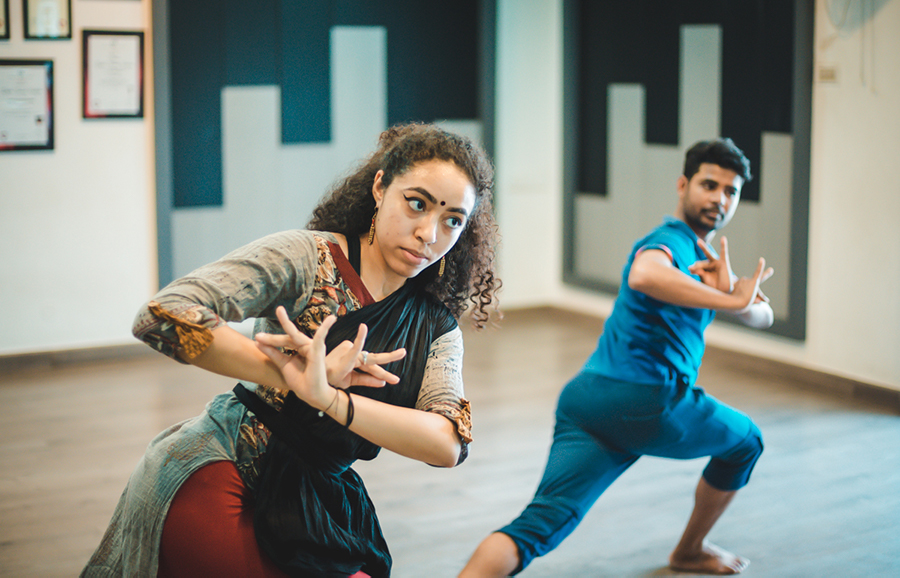
Natya’s performers and Deboo’s group joined to perform and teach a piece of Indian dance that combines Rajagopalan’s traditional style with Deboo’s more contemporary movements.
When Natya received a $50,000 ICF grant, Rajagopalan immediately called Deboo. What followed were trips between Chicago and multiple Indian cities for collaborations among dancers, musicians, a puppeteer, and photographers.
“You have to start planning way ahead,” Rajagopalan said, “and anticipate issues with connecting ideas and establishing rapport. It’s a lot of talking on the phone and agreeing—or disagreeing—and then coming together.”
Experiencing the improvisational, free-flowing nature of the contemporary dancers from India expanded Rajagopalan’s teaching and broke barriers among different art forms and artists. It helped Natya’s dancers embrace artistic risk, she said—while also managing a 10-and-a-half-hour time difference between India and Chicago.
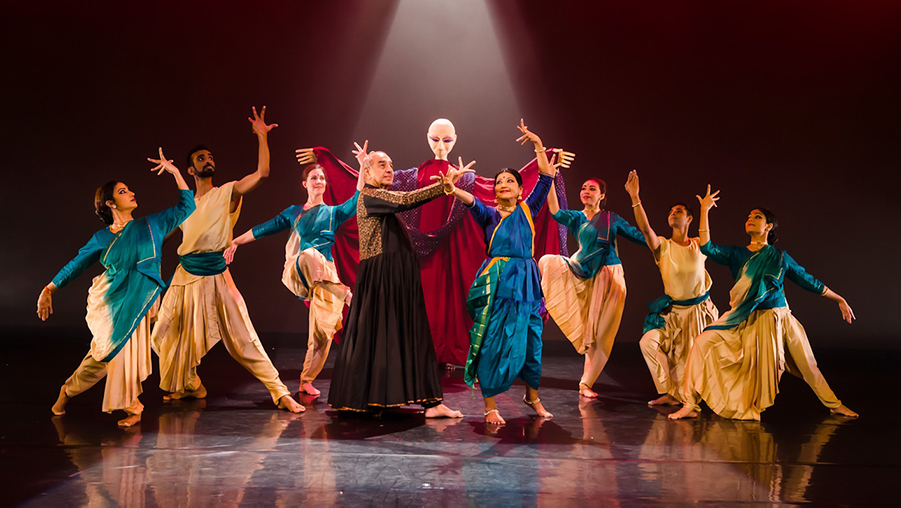
Natya Dance performers in "INAI-The Connection"
The result was “INAI-The Connection,” a nearly 90-minute performance in which nine barefoot dancers—one of whom performs as a 10-foot tall puppet—move through theatrical smoke and colored light, accompanied by a vocalist, percussionist, violinist, and saxophone player.
The dancers’ flowing, multi-colored outfits, fluid movements, and evocative facial expressions all are aimed at the theme of breaking personal, community, religious, racial, and cultural barriers. At a recent performance at the Dance Center of Columbia College Chicago, an audience of about 200 stood for an extended ovation.
One attendee, Susan Eleuterio, said she felt uplifted by the message of embracing struggle to find connection and oneness. “For me,” Eleuterio said, “hearing the music and seeing the dance reminds me of the ways arts can bring us together.”
For Martins, the exchange meant obtaining travel clearances for artists, dancers, poets, even an architect—all of whom came to Chicago for 10 days.
Comfort Station and Dorchester Art + Housing Collaborative hosted several events, and Martins persuaded other Chicago organizations to become venues. The Poetry Foundation presented a creative writing workshop. Links Hall hosted an improvisational dance and music program.
The grantees see the collaborations as investments in which they learn from each other and strengthen relationships for the long-term, producing art that would have been impossible without the international connections.
“On one hand, us doing an international project is ridiculous,” Martins said, laughing. On the other, the grant—twice Comfort Station’s operating budget from the previous year—has made the organization “part of the international conversation.”
The grants give the groups stronger credibility with other funders, open new doors, and, in Comfort Station’s case, Martins said, alter “the lifeblood of what we do and who we are.”
“Our programmers have bigger imaginations for what is possible,” he said.
The International Connections Fund was established in 2008 to help Chicago nonprofit organizations advance their work by collaborating with peer organizations abroad. MacArthur has funded 149 exchanges, totaling $6.1 million for projects in 63 different countries.



